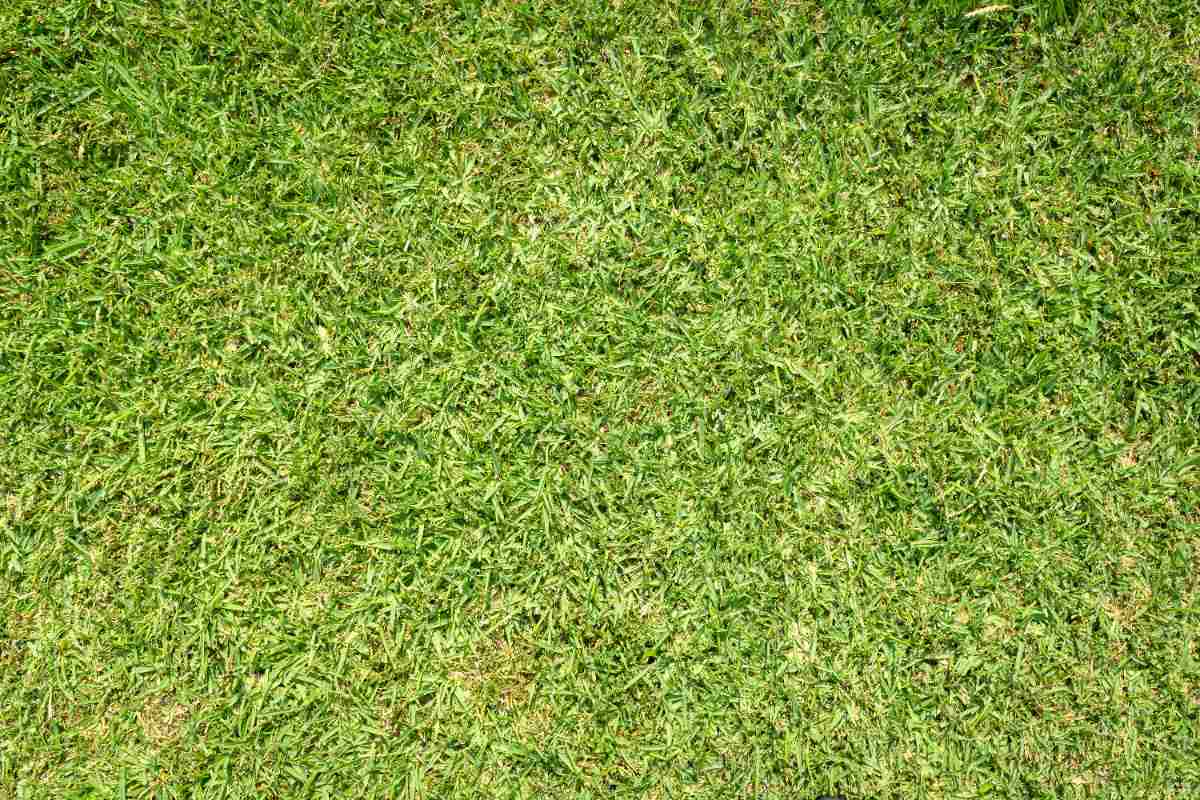
Due to climate change, droughts are becoming increasingly common. But if you choose from the best drought-tolerant grasses, such as Bermudagrass and fine fescues, you can maintain a lush and green lawn even in scorching heat.
Drought is one of the worst nightmares of any lawn lover, as it can do significant damage to grasses. According to the Palmer Drought Severity Index, conditions for around 10 to 70 percent of the country’s land area were drier than usual from 2000 to 2023. With our expert tips, you can determine which among these drought-resistant grass types is the best for your yard.

Top Drought-Tolerant Warm-Season Grasses
Generally, warm-season grasses grow best in places with warm summers. But while they do well in warm climates, drought conditions can put them to the test.
From the most drought-tolerant to the least drought-tolerant, these warm-season grasses are especially built for these tough conditions:
1. Bermudagrass

Out of all drought-resistant grasses, Bermudagrass is the champion. It’s fast-growing, hardy, and thrives even in drought conditions. Ideal for soccer fields, this warm-season grass is resilient and recovers quickly.
Bermudagrass does best with full sunlight and regular trimming. But what makes it drought-tolerant is its deep, fibrous root system, which extends deep into the soil. Once established, it forms a dense, green lawn that’s hard to beat in dry weather.
According to Michael Masucci, community association liaison and public educator at the University of Florida IFAS Extension, “Bermudagrass recovers quickly after dry periods, thanks to its aggressive growth and deep root structure. It performs well in full sun and poor soils.”
| Pros | Cons |
| ✓ Excellent drought and heat tolerance ✓ Perfect for high-traffic yards ✓ Quickly recovers from wear and damage | ✗ Turns brown during cooler months ✗ High maintenance during peak growing season ✗ Can spread aggressively into unwanted areas |
Best for: Thrives in USDA hardiness zones 6-10, making it suitable for a wide range of warm climates, such as Texas, Georgia, South Carolina, Oklahoma, and parts of California.
Note: If you’d rather have drought-tolerant ground covers, you can hire a local landscaping pro for help.
2. Buffalograss
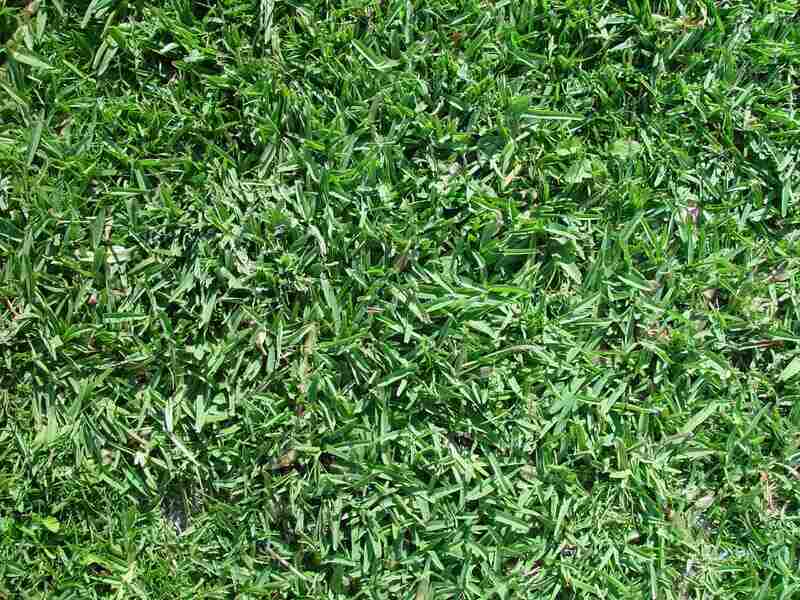
Native to the Great Plains, buffalograss evolved to survive in areas where rainfall is scarce and the summers are hot. This native grass has an extensive root system that allows it to pull water from deep underground.

A top pick for eco-friendly yards, buffalograss is ideal for xeriscaping and dryland lawns with limited water availability.
| Pros | Cons |
| ✓ Extremely low water and mowing needs ✓ Grows well in poor soils ✓ Native and eco-friendly | ✗ Limited shade tolerance ✗ Not ideal for high-traffic areas ✗ Dormant brown color for much of the year in some climates |
Best for: Hardy in USDA hardiness zones 4-8, including the Great Plains and dry central states like Colorado, Nebraska, Kansas, and Oklahoma.
3. Zoysiagrass
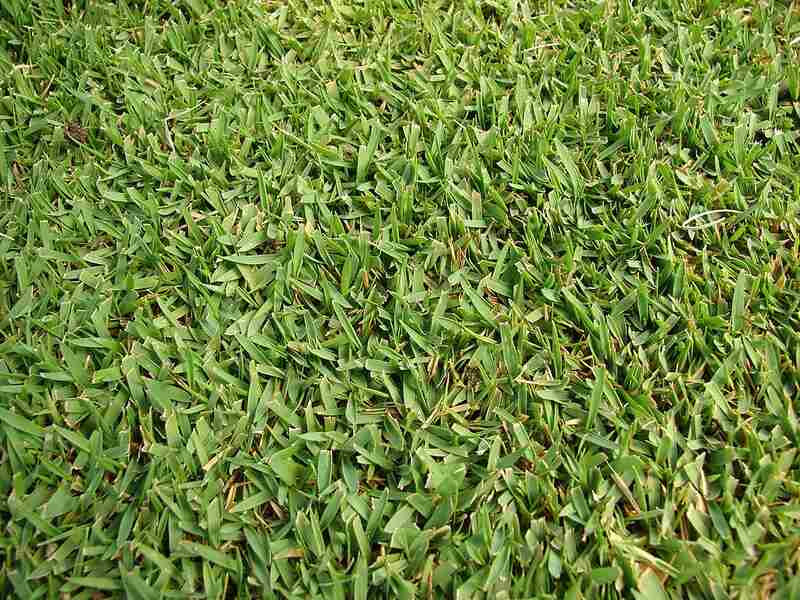
A favorite among homeowners, Zoysiagrass can give you a thick lawn even if you skip a watering session or two. It forms a lush, green lawn that crowds out weeds naturally and handles moderate foot traffic.
Zoysiagrass has a dense root system and a waxy leaf coating that helps reduce water loss. During extended dry spells, it enters dormancy but rebounds quickly once watered.
| Pros | Cons |
| ✓ Very drought-tolerant once established ✓ Thick growth helps suppress weeds ✓ Low fertilizer requirements | ✗ It’s not recommended to plant Zoysia from grass seeds since they’re slow to establish ✗ Can be prone to thatch buildup ✗ May turn brown early in fall |
Best for: Thrives in USDA hardiness zones 6-11, including North Carolina, Tennessee, Arkansas, and Northern Texas.
| If you need help mowing your lawn, you can hire a LawnStarter lawn care pro to do it for you. Our customers pay our pros an average of $51 to mow a 1/4 acre lawn. |
4. Bahiagrass
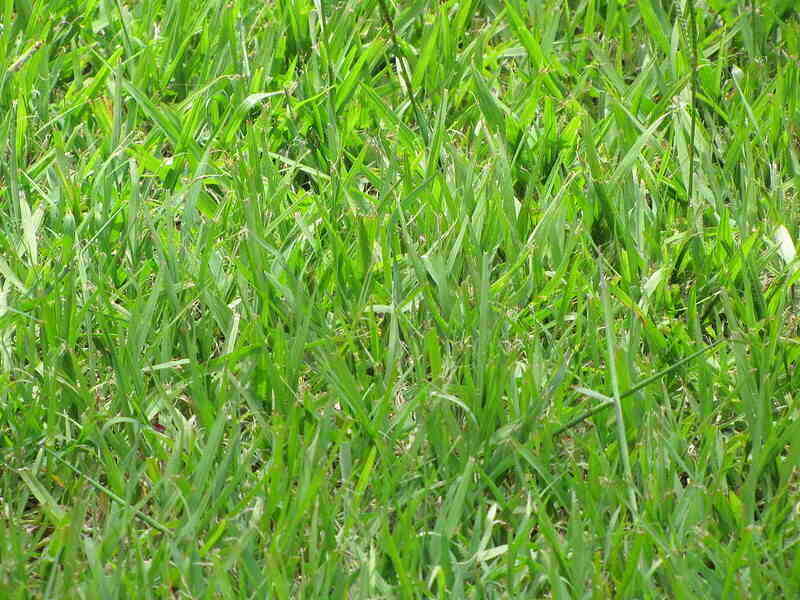
Coarse and open-bladed, bahiagrass is commonly used in roadsides and low-maintenance lawns. It does well in sandy soils and withstands intense sun and heat.
“Bahiagrass is the easiest warm-season option for low-maintenance, drought-prone areas due to its minimal fertilizer needs, adaptability, and low cost,” says Masucci. He agrees that bahiagrass is one of the most drought-tolerant grasses.
“Its minimal water and fertilizer requirements make it ideal for regions with frequent dry spells,” he says.
Its deep root system makes bahiagrass highly efficient at accessing groundwater during dry spells. While it may not have the manicured look of a golf course, it can quickly green up once watered after a severe drought.
| Pros | Cons |
| ✓ Excellent drought and heat resistance ✓ Low fertility and water needs ✓ Ideal for poor soils | ✗ Coarse texture and open growth may look patchy ✗ Seed heads appear quickly if unmowed ✗ Doesn’t tolerate cold or shade well |
Best for: Best suited for USDA hardiness zones 8-10, including hot, humid southeastern regions like Florida, southern Alabama, and coastal Georgia.
5. Centipedegrass

“Lazy man’s grass” is a common nickname for centipedegrass because it practically takes care of itself. It doesn’t grow fast, so there’s less mowing involved, and it doesn’t demand a lot of water or fertilizer.
Centipedegrass can slow its growth and go partially dormant, helping it survive dry periods. While its shallow root system can’t pull moisture from deep underground, it recovers well when watered again.
| Pros | Cons |
| ✓ Very low maintenance ✓ Tolerates heat and moderate drought ✓ Grows well in poor, acidic soils | ✗ Sensitive to cold and foot traffic ✗ Doesn’t tolerate salt or high pH well ✗ Slower to recover from damage |
Best for: Performs best in USDA hardiness zones 7-10, including Alabama, Mississippi, Georgia, and the Carolinas.
6. St. Augustinegrass
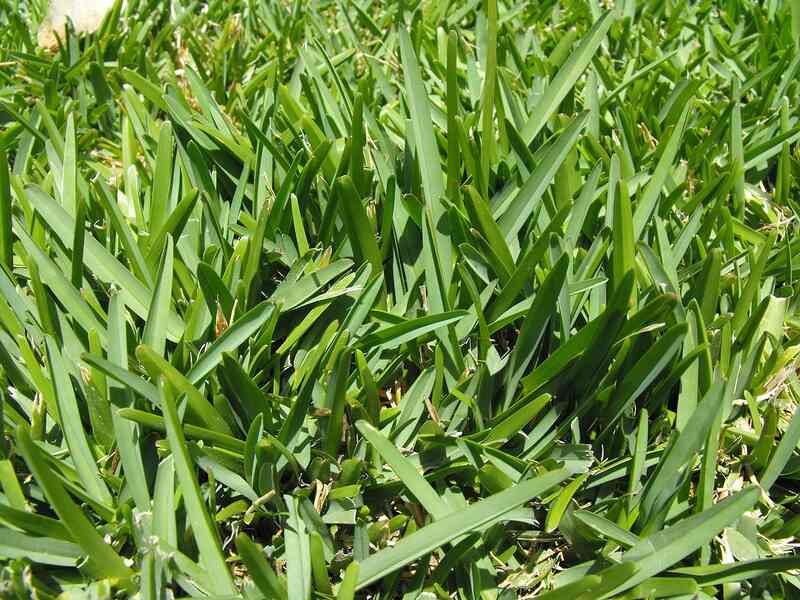
Favored in coastal regions, St. Augustinegrass can thrive in sandy soils and humid conditions. It has a coarse texture and a rich, blue-green color.
St. Augustinegrass can survive short dry spells by entering a dormant state. It has deep roots and an ability to recover quickly once watered. Plus, its thick leaves can hold moisture well.
| Pros | Cons |
| ✓ Good drought and salt tolerance ✓ Tolerates shade better than most warm-season grasses ✓ Grows quickly and fills in bare spots | ✗ Not cold-hardy; struggles in frost-prone areas ✗ Susceptible to chinch bugs and fungal diseases ✗ Requires frequent mowing in summer |
Best for: Ideal for USDA hardiness zones 7-12, including humid southern coastal regions, such as Florida, Louisiana, and the Gulf Coast.
Top Drought-Tolerant Cool-Season Grasses
Actively growing in spring and fall, cool-season grasses generally prefer milder temperatures. But just because they thrive in cooler weather doesn’t mean they can’t handle a dry spell.
These cool-season grasses (listed from the most to the least drought-tolerant) have surprisingly good tolerance to drought, especially when properly maintained:
1. Fine Fescue

Photo Credit: Aaron J. Patton, Ph.D. / Turfgrass Extension Specialist at Purdue University
Prized for their low-maintenance nature and shade tolerance, fine fescues, which include hard fescue and creeping red fescue, have slender blades and a soft, fine texture, great for walking barefoot.
These fescues can go dormant during extended dry periods, but can bounce back quickly once it rains or when watered. Their thin blades and slow growth rate both help to reduce their water demand.
| Pros | Cons |
| ✓ Grows well in shade and poor soils ✓ Minimal fertilizer and mowing needs | ✗ Not ideal for high-traffic areas ✗ May thin out in high heat or humidity ✗ Can look patchy without overseeding |
Best for: Ideal for USDA hardiness zones 3-7, including cool, shady regions in the northern U.S. and New England, such as Minnesota, Wisconsin, Vermont, and upstate New York.
2. Tall Fescue
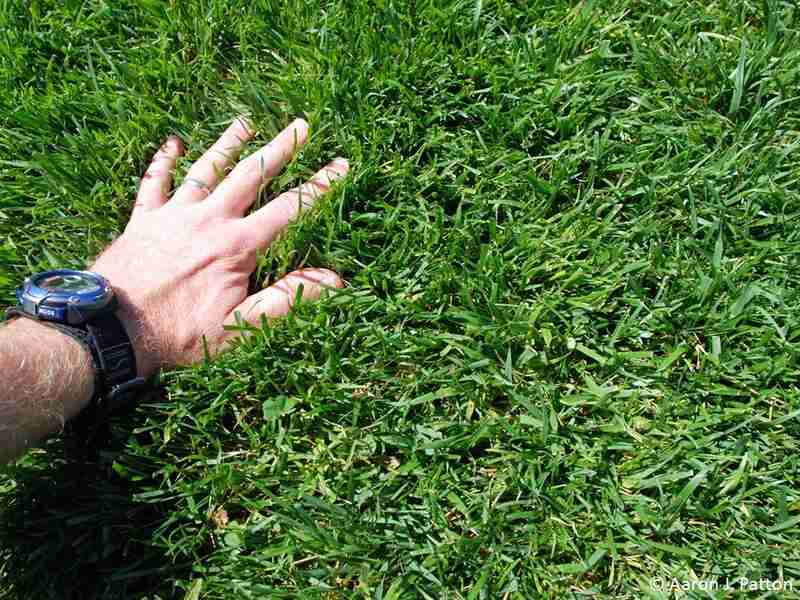
Photo Credit: Aaron J. Patton, Ph.D. / Turfgrass Extension Specialist at Purdue University
According to Masucci, tall fescue is resistant to drought “due to its deep, dense roots that access water far below the surface, enabling it to stay green longer during dry spells.”
It can go semi-dormant, then bounce back to life once conditions improve.
| Pros | Cons |
| ✓ Excellent drought resistance for a cool-season grass ✓ Tolerates heat and moderate foot traffic ✓ Grows in sun or partial shade | ✗ Coarse texture may not appeal to everyone ✗ May brown in extreme cold or heat |
Best for: Grows best in USDA hardiness zones 5-9, including transition and northern regions, such as Virginia, Kentucky, Missouri, and parts of the Pacific Northwest.
3. Sheep Fescue

With a blue-green hue, sheep fescue is often used for erosion control, naturalized areas, and eco-friendly or no-mow lawns.
It doesn’t need much water or fertilizer, and it can survive rocky or sandy soils where other grasses fail to grow. Its waxy coating and fine blades help reduce water loss through evaporation, and its clump-forming characteristic also conserves soil moisture.
| Pros | Cons |
| ✓ Extremely drought-resistant grass ✓ Low-maintenance and rarely needs mowing ✓ Grows well in poor, rocky soils | ✗ Not suitable for traditional high-traffic lawns ✗ Doesn’t self-repair like rhizome-spreading grasses like Kentucky bluegrass ✗ Its patchy appearance may not suit all tastes |
Best for: Ideal for USDA hardiness zones 2-7, including cold northern regions and mountainous areas like Montana, the Dakotas, Colorado, and northern New England.
4. Kentucky Bluegrass (Drought-Tolerant Cultivars)
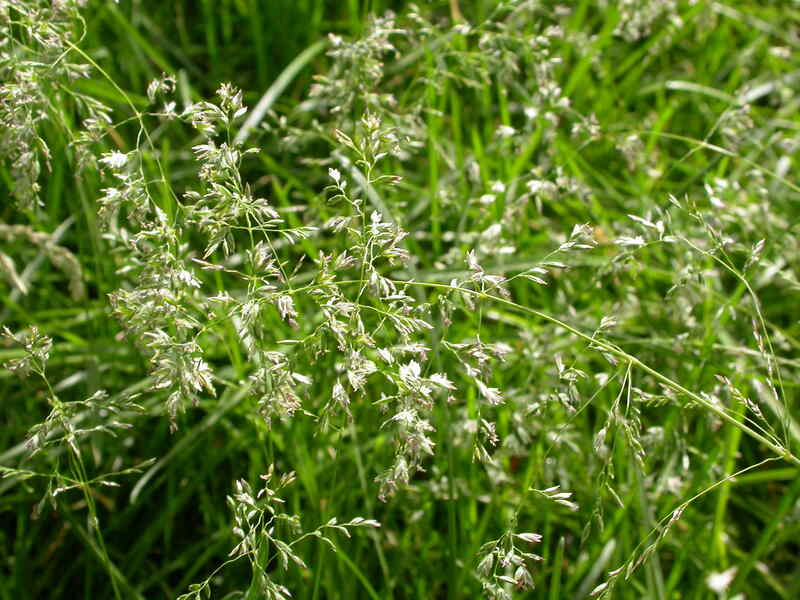
It’s tough to beat the signature dark green color of Kentucky bluegrass. Fortunately, some of the new varieties produced from selective breeding are now drought-tolerant.
While traditional bluegrass types have shallow roots, newer varieties like ’BlueBank’ and ’Midnight’ have been bred to have roots that go deeper and hold up better during dry weather. They’ll still need more water than fescues in hot summers, but in cooler areas with occasional drought, they can perform well.
| Pros | Cons |
| ✓ Attractive, lush appearance ✓ Good cold tolerance ✓ Self-repairing due to rhizome spread | ✗ High water and fertilizer needs compared to other cool-season grasses ✗ Susceptible to drought stress and heat damage ✗ Slower germination (can take up to 21 days) |
Best for: Thrives in USDA hardiness zones 3-7 in cold northern states like Illinois, Ohio, Pennsylvania, and New York.
FAQ About Drought-Tolerant Grasses
It depends on the type. For example, Bermudagrass takes less time to establish than buffalograss or fine fescue. Whether it’s planted as seed or laid as sod also affects how quickly your drought-tolerant grass will establish.
Some drought-tolerant grasses, like tall fescue and Zoysiagrass, are fairly disease-resistant. But drought tolerance doesn’t always mean fewer pests or diseases. That’s why regular and proper lawn care still matters.
Some, like Bermudagrass and tall fescue, stay green longer in dry spells, but most will go dormant during extended drought and bounce back once watered. Using a grass paint is also one way to maintain your lawn color during a drought.
Keep Your Lawn Green with Less Effort
You wouldn’t want to spend summer tending to your lawn just to keep it green. The secret is to choose the right grass type that can naturally thrive during these dog days. And if you hire local lawn care pros, you can be sure you and your lawn have plenty of time to enjoy the sun.
Read More:
- 7 Drought-Tolerant Landscaping Ideas
- How to Take Care of Your Lawn During a Drought
- 20 Best Drought-Tolerant Trees by Region
Sources:
- “Climate Change Indicators: Drought.” United States Environmental Protection Agency.
- “Drought Tolerant Buffalograss.” By Jeff Schalau, Extension agent. University of Arizona Cooperative Extension.
- “Drought-Tolerant Lawn Species Help Reduce Water Use, Still Look Great.” By Chris Hilgert, master gardener coordinator. University of Wyoming Extension.
- “Lawns.” By Grady Miller, professor of crop science. North Carolina State University Extension.
- Michael Masucci, community association liaison and public educator at the University of Florida IFAS Extension. Personal interview.
- “North Carolina Extension Gardener Plant Toolbox.” North Carolina State University Extension.
- “Ornamental Grasses and Grass-Like Plants.” By Karen Russ, former HGIC horticulture specialist, and Robert Polomski, associate Extension specialist. Clemson University.
- “USDA Plant Hardiness Zone Map.” U.S. Department of Agriculture.
- “Your Lawn During Drought.” University of California Agriculture and Natural Resources.
Main Image Credit: Formatoriginal / Adobe Stock